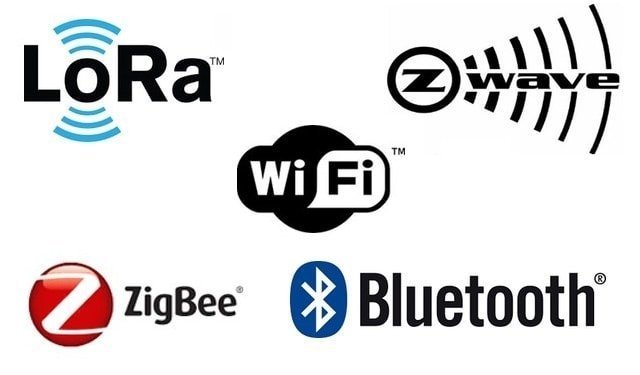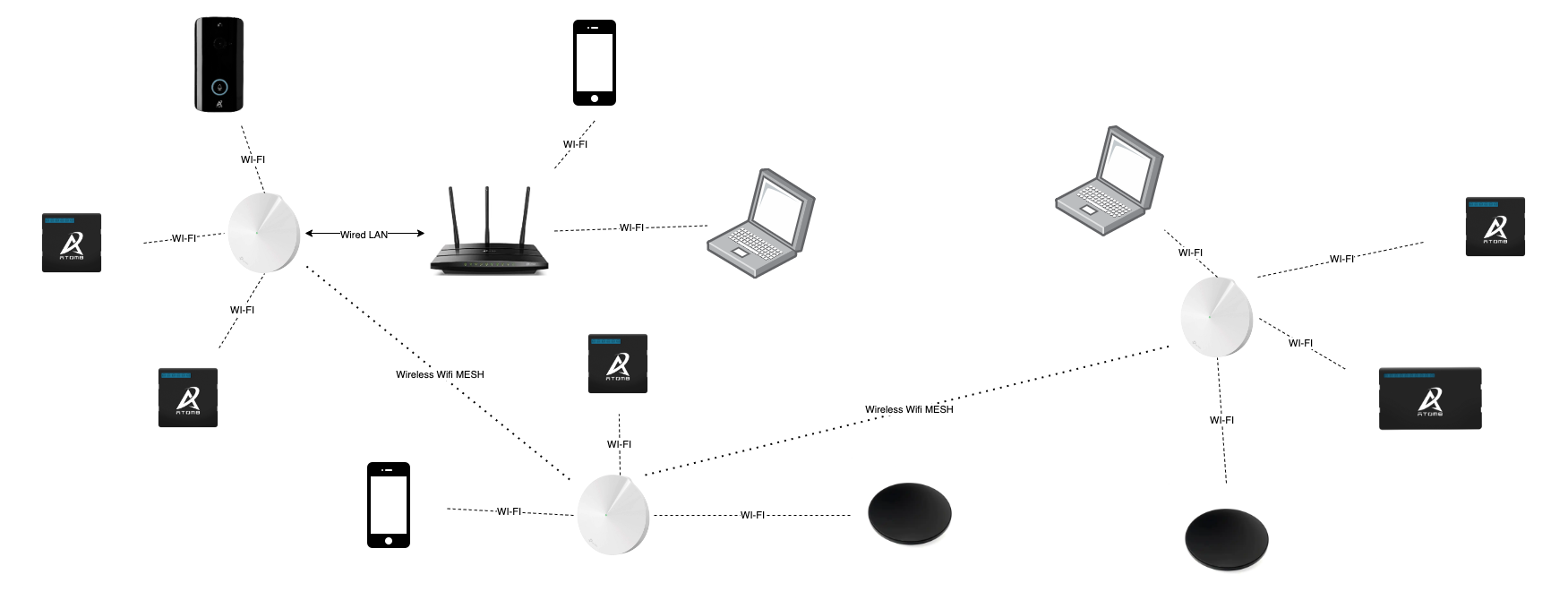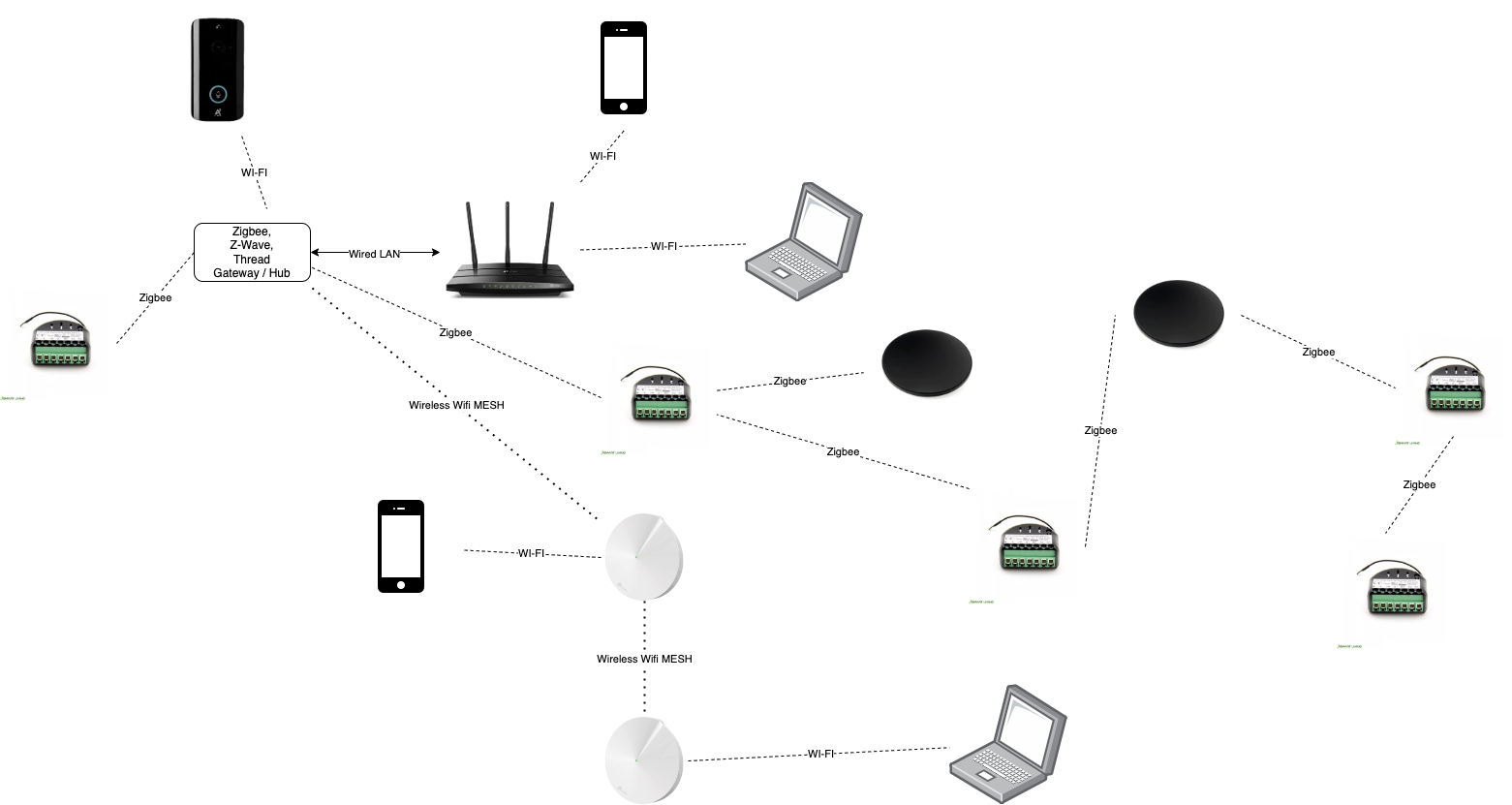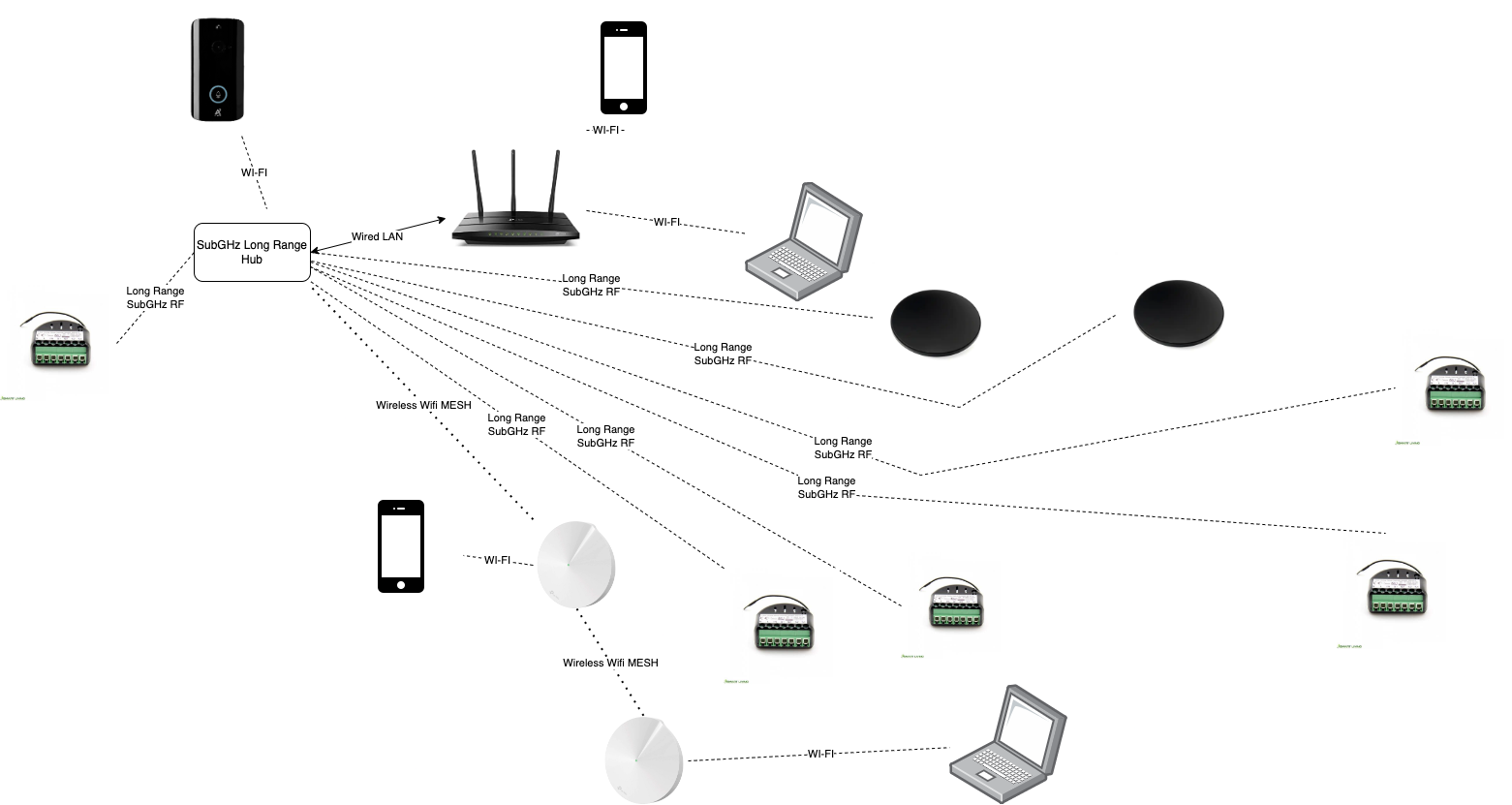Wireless Technologies in Home Automation and Security

Wireless technologies have revolutionized the field of home automation and security by offering convenience, flexibility, and ease of use. These technologies allow homeowners to control various aspects of their homes remotely through smartphones, tablets, or computers. For instance, they can use wireless cameras to monitor their homes from anywhere in the world and receive alerts in case of any suspicious activity. Wireless door locks and smart home assistants can be controlled from a distance, providing added convenience and security. Furthermore, wireless technologies can be integrated with other home automation systems, such as lighting, heating, and air conditioning, to create a seamless, personalized experience. With their affordability, scalability, and compatibility with multiple devices, wireless technologies have become the go-to option for modern home automation and security systems.
Wireless technologies in home automation and security viz. Wi-Fi, Zigbee, Thread, Z-Wave, LoRa and Long Range SubGHz RF are compared on the following dimensions
- Frequency
- Range
- Data Transfer Rage
- Battery Life
- Scalability (Max devices in a network)
- Security
- Setup
We also take a look at the future upcoming standards like Wi-Fi HaLow and Matter.
Frequency
The most commonly used frequency bands in wireless technologies in home automation and security are as below. There are many other frequencies and technologies used but they are not popular and fall in the minority segment and hence is out of the scope.
| Technology | Frequency |
|---|---|
| Wi-Fi | 2.4 GHz, 5 GHz, and 6 GHz. |
| Zigbee | 2.4GHz |
| Thread | 2.4 GHz |
| Long Range SubGHz RF | 868 MHz band (used in Europe) 915 MHz band (used in North America and Australia) 2.4 GHz band (used worldwide) |
| LoRa | 169 MHz, 433 MHz (Asia), 868 MHz (Europe) and 915 MHz (North America) |
| Z-Wave | 865MHz to 926.3MHz (https://www.silabs.com/wireless/z-wave/global-regions) |
Range
There are numerous factor which affect the range of wireless technologies in home automation and security
Distance from Access point of Hub (Inverse Square Law)
All wireless technologies depend on electromagnetic waves. In free space the intensity of the electromagnetic waves reduce proportional to the square of the distance from the source (Wi-Fi routers, central home automation hubs etc…). This is known as the Inverse Square Law.
This implies that if you double the distance to your home automation hub or wireless router the intensity of the signal reduces by 1/4th.
Obstructions like concrete walls
Obstructions can affect both higher and lower frequencies of Wi-Fi signals, but they tend to have a more significant impact on higher frequencies.
Higher frequency signals, such as those used by 5 GHz Wi-Fi networks, have shorter wavelengths and are more easily absorbed by obstacles such as walls, furniture, and other structures. As a result, they are more prone to attenuation and signal loss when obstructed.
Lower frequency signals, such as those used by 2.4 GHz Wi-Fi networks, have longer wavelengths and are better able to penetrate obstacles. However, they can still be affected by large or dense obstructions, especially at longer distances.
Similarly obstructions affect Wi-Fi signals more than Sub GHz signals for the same reason and hence tend to have lower range than Sub GHz signals.
Interference in the frequency spectrum
WiFi operates in the 2.4 GHz and 5 GHz frequency bands, while sub-gigahertz frequencies refer to frequencies below 1 GHz, typically in the range of 150-960 MHz. Interference in these frequency bands can have different sources and effects.
WiFi interference is caused by other WiFi networks operating on the same or nearby channels, microwave ovens, Bluetooth devices, cordless phones etc… This interference can result in decreased WiFi performance, including slower data speeds and dropped connections.
Sub-gigahertz interference is caused by radio and TV broadcasts, cellular networks, and industrial, scientific, and medical (ISM) equipment. Sub-gigahertz interference can affect a range of wireless technologies, such as wireless sensors and IoT devices, and can lead to issues such as decreased range, reliability, and data throughput.
In general, both WiFi and sub-gigahertz interference can be mitigated through careful channel selection, use of interference-resistant technologies, and proper device placement and configuration. However, sub-gigahertz interference can be more challenging to overcome due to its longer wavelength and the presence of many more sources of interference in this frequency range.
Position of the central hub, router or access point
To optimize the wireless signal, the AP or the hub should be placed in a central location within the coverage area, typically near the middle of the room or building, and at an appropriate height. The height of the AP should be high enough to avoid physical obstructions, but not so high that it is too far from the devices it serves. Additionally, the AP’s antenna orientation and design can also affect the signal’s strength and coverage.
Proper placement and configuration of the AP are essential for achieving optimal wireless performance, as it can impact signal strength, reliability, and speed, all of which are critical for a seamless and efficient wireless experience.
Power of the central hub, router or access point
The power of an access point (AP) can have a significant impact on the strength of the wireless signal. The power of the AP is measured in milliwatts (mW) or decibels (dBm), and it determines the intensity of the radio signal that the AP sends out.
Generally, increasing the power of the AP will result in a stronger wireless signal, which can improve the signal’s coverage area and penetration through obstacles. However, there are limits to how much power can be used without causing interference with nearby wireless networks or other electronic devices.
Higher AP power levels can also increase the risk of signal interference and can cause congestion and slower network speeds. This is because, in a crowded wireless environment, APs operating on high power can interfere with other APs that operate on the same channel or nearby channels, causing channel overlap and interference.
In summary, increasing the power of an AP can improve the signal strength and coverage area, but it should be done carefully, considering the wireless environment and potential interference. Optimizing the AP power levels is part of the process of designing and deploying a wireless network and requires careful consideration of the specific environment and requirements.
| Technology | Range |
|---|---|
| Wi-Fi | 10 – 30m |
| Zigbee | 10 – 30m |
| Thread | 10 – 30m |
| Z-Wave | 30 – 100m |
| Long Range SubGHz RF | 500m – 2km |
| LoRa | 1 – 10km |
Data Transfer Rate
Higher frequencies can provide higher data transfer speeds than lower frequencies, assuming other factors such as signal strength and interference remain constant. It is worth noting that the relationship between frequency and data transfer speed is not linear, and there are limits to the amount of data that can be transmitted at any given frequency. These limits are influenced by a number of factors, including the modulation technique used, the encoding method, and the amount of available bandwidth. Each of the protocols like Wi-Fi, Zigbee, ZWave and other are not just using a particular frequency but are also using different modulation techniques, different encoding methods and make use of different channels. The below figure gives an overview of the supported data rates in each of the below wireless technologies in home automation and security
| Technology | Data Transfer Rate |
|---|---|
| Wi-Fi | 2Mbps to 2.4Gbps |
| Zigbee | 250Kbps |
| Thread | 250Kbps |
| Z-Wave | 100Kbps |
| Long Range SubGHz RF | 115Kbps – 1.15Mbps |
| LoRa | 27Kbps |
Battery Life
When it comes to battery life, Zigbee, Z-Wave, Thread, LoRa, and Sub-GHz RF protocols outperform WiFi. WiFi, known for its high-speed data transfer, consumes more power and drains batteries quickly. In contrast, Zigbee and Z-Wave utilize mesh networking and low-power sleep modes to extend battery life, often lasting several years on a single battery. Thread and LoRa prioritize energy efficiency through optimized routing and sleep schedules, enabling impressive battery life for IoT devices. Sub-GHz RF protocols vary in power consumption but generally focus on optimizing power usage for long-lasting battery performance. Considering battery life is crucial when selecting a wireless protocol, particularly for battery-powered or remote IoT applications.
| Technology | Battery Life |
|---|---|
| Wi-Fi Continuous Mode | 10 – 24 Hrs |
| Wi-Fi Power Saving Mode | Upto 1000 Hrs |
| Zigbee Continuous Mode | Upto 1 Year |
| Thread Continuous Mode | 1 – 2 Years |
| Z-Wave Continuous Mode | 1 – 2 Years |
| Long Range SubGHz RF Continuous Mode | 24 – 72 Hrs |
| Long Range SubGHz RF Power Saving Mode | Upto 7 Years |
| LoRa | 1 - 3 Years |
Scalability (Network Size)
WiFi stands out as a wireless protocol capable of supporting large networks with hundreds of devices. Zigbee and Z-Wave are suitable for small-sized networks. Thread and LoRa offer scalability for larger networks, supporting thousands of devices and covering extensive areas. Sub-GHz RF protocols also support large-scale networks, making them ideal for applications requiring broad coverage. Understanding the network size capabilities of these wireless protocols helps in selecting the most suitable option for specific applications.
| Technology | Network size |
|---|---|
| Wi-Fi Wifi 5 | 10 – 15 Devices |
| Wi-Fi Wifi 6 | Upto 150 devices |
| Zigbee | 30 devices |
| Thread | 250 devices |
| Z-Wave | 232 devices |
| Long Range SubGHz RF | 150 devices |
| LoRa | Upto 2000 devicse |
Security
When it comes to the security of various protocols, each one has its own considerations and measures in place. Starting with Wi-Fi, it utilizes the WPA2/WPA3 protocols, which provide encryption and authentication mechanisms to safeguard network communications. However, it is important for users to use strong passwords and keep their Wi-Fi access points up to date with the latest security patches.
Moving on to Zigbee, it incorporates AES-128 encryption for secure communication between devices, preventing unauthorized access. Zigbee devices also have the capability to join a network securely through a process called "trust center link key exchange."
Z-Wave, another popular home automation protocol, employs AES-128 encryption and uses a unique network key for each installation. This ensures secure communication between devices and prevents unauthorized access to the network.
Thread, designed for smart home devices, adopts various security mechanisms such as secure boot, secure data storage, and AES encryption for data confidentiality. It also utilizes IEEE 802.15.4 security features, including secure frame protection and device authentication.
LoRa (Long Range) technology, commonly used for low-power wide-area networks (LPWAN), incorporates AES-128 encryption to protect data transmitted over the network. LoRaWAN, the networking protocol built on top of LoRa, provides end-to-end encryption for secure communication between devices and gateways.
Lastly, Sub-GHz RF protocols encompass a range of wireless communication technologies operating below 1 GHz frequency. The security of Sub-GHz RF protocols varies depending on the specific protocol being used. Some protocols may offer basic encryption mechanisms, while others may rely on additional security measures provided by the application layer.
In conclusion, while these protocols have security measures in place to protect communication and data, it is crucial for users and network administrators to follow best practices, such as regularly updating firmware, using strong passwords, and implementing additional security measures when necessary, to ensure a robust and secure network environment.
| Technology | Security Protocol |
|---|---|
| Wi-Fi | WPA2 + CCMP + AES 128Bit |
| Zigbee | AES 128 Bit |
| Thread | AES 128 Bit |
| Z-Wave | AES 128 Bit |
| Long Range SubGHz RF | AES 128 Bit |
| LoRa | AES 128 Bit |
Setup
A typical setup of a home with different wireless technologies in home automation and security are shows below
Wi-Fi

IOT Mesh – Zigbee, Z-Wave, Thread etc…

Long Range Sub GHz RF

Why Wi-Fi?
Wi-Fi turns out to be the most cost effective for majority of the scenarios for home automation and security
- No need to invest in a separate hub or gateway. Hence reduces the upfront costs in starting with automation.
- Wi-Fi network setup at home is increasing becoming a necessity and investment into it will not be for home automation but out of necessity
- Since Wi-Fi is widely adopted across the world the chips for Wi-Fi are available very at very economic costs bringing down the cost of the Wi-Fi home automation devices
Future Wireless Technologies and Standards
Wi-Fi HaLow – 802.11ah
Wi-Fi HaLow enables the low power connectivity necessary for applications including sensor networks and wearables.
- Sub 1GHz spectrum operation
- Wi-Fi alliance certified (https://www.wi-fi.org/discover-wi-fi/wi-fi-certified-halow)
- 1km long range
- Runs on batteries for years on power saving mode
- Provides data rate up to 1.15Mbps for video streaming
Matter Standard
Matter (formerly known as Project CHIP) is an open-source and royalty-free wireless communication standard developed by the Connectivity Standards Alliance (formerly known as the Zigbee Alliance) in collaboration with Amazon, Apple, Google, and other leading technology companies.
It is designed to enable smart home devices to communicate with each other securely and seamlessly across different ecosystems and platforms. It is built on existing wireless standards, such as Wi-Fi, Bluetooth Low Energy, and Thread, and uses IP (Internet Protocol) as its foundation, allowing for interoperability between different devices and platforms.
According to Nordic Semiconductor “Matter is using Thread, Wi-Fi, and Ethernet for transport and Bluetooth LE for commissioning. All Matter devices based on Thread are required to feature Bluetooth LE concurrently to enable adding new devices to a network. Wi-Fi can be used for high bandwidth applications. It can be used for devices in range of the local Wi-Fi. Thread is an IPv6-based mesh protocol that targets low bandwidth applications. It is the go-to option for battery-powered devices that require the best energy efficiency and for simple actuators like smart plugs or light bulbs. Most mains-connected Thread devices work as a Thread router and will expand the network’s range. Thread is a self-healing low-power mesh that can adapt to new devices or to devices being removed from the network.”
When is wireless unreliable?
Wi-Fi is the only wireless technology with high enough data rates for video transmission but it shots fall in terms of range, stability of video streams for Surveillance Cameras and also for 2 Way communication for Video Doorbells and Video doorphones. As of today the only stable known way to stream audio and video well is using a wired IP connection using CAT6 cables and RJ45 connectors.
Conclusion
There are many different wireless technologies available today, each with its own strengths and weaknesses. Here’s a brief summary of some of the most common wireless technologies:
- Wi-Fi: Wi-Fi is a wireless networking technology that allows devices to connect to the internet and communicate with each other using radio waves and is widely used in homes, offices, and public spaces.
- Bluetooth: Bluetooth is a short-range wireless technology that is used to connect devices like smartphones, headphones, and speakers to each other and is typically used for low-bandwidth applications and is commonly found in consumer electronics.
- Zigbee: Zigbee is a low-power, mesh networking technology that is commonly used in smart home applications and uses small, low-cost chips and has a range of up to 100 meters.
- Z-Wave: Z-Wave is another low-power, mesh networking technology that is used in smart home applications and uses a proprietary wireless protocol and has a range of up to 100 meters.
- LoRaWAN: LoRaWAN is a long-range, low-power wireless technology that is used for IoT (Internet of Things) applications and can provide coverage over several kilometers and is commonly used in applications like smart cities, agriculture, and logistics.
- Thread: Thread is a low-power, mesh networking technology that is used for smart home applications and it is built on top of the IPv6 networking protocol and uses 6LoWPAN (IPv6 over Low-Power Wireless Personal Area Networks) to provide connectivity.
Each of these wireless technologies has its own unique set of features and benefits, and the choice of technology will depend on the specific requirements of the application.
